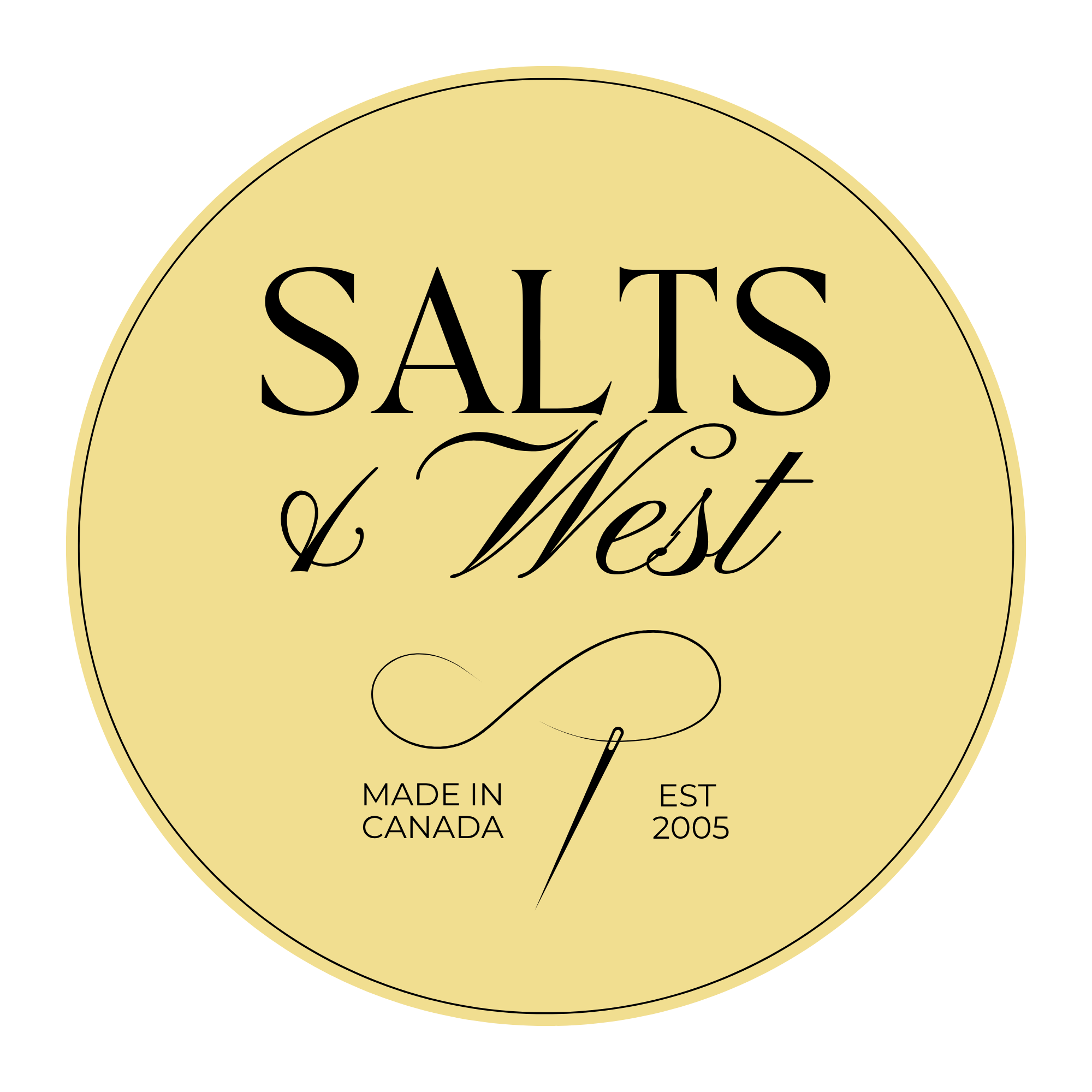Wow! Has there ever been a lot of change in the last few weeks. Covid-19 has drastically changed the shape and movement of our lives as we try to flatten the curve and save our health care systems. Here is our process for making your own cloth face mask.
Reusable surgical masks were used successfully for decades before being replaced by better technology. Unfortunately that better technology is running out all over the place so we are trying to lighten the load by providing an alternative for less transmissible circumstances so the N95's can be saved for where they are really needed. Thus our little business has quickly transitioned from a small local company making ethical clothing to a hub of reusable face mask making industry. You might have even seen us on the news!
We are currently getting requests from Dr's, clinics, care facilities and individuals all over North America. We have also been getting requests for information on how to best proceed making masks for yourselves and your loved ones.
In the interest of helping as many people as we can do whatever we can to slow the progress of this disease we are posting our pattern below as well as links to many of the resources we have looked into while developing this product for use.
These masks DO NOT replace the N95's.
These masks also need to be removed and washed in very specific ways to avoid contamination. As my respiratory therapist friend explained you need to avoid touching them at all on the outside once they have been used. First wash your hands. Then you remove the mask touching the elastics only and immediately place them directly into the washing machine. Then wash your face and hands again. Wash the mask with bleach or hydrogen peroxide added to the load. Bleach of course will alter the colour of the mask.
Fabric choices:
https://smartairfilters.com/en/blog/best-materials-make-diy-face-mask-virus/
Our Pattern:
At its most basic our pattern is made of three rectangles folded and sewn together.
The basic adult sized mask begins with a rectangle of fabric (1 or 2 layers depending how thick your fabric is). The rectangle measures 16.5 inches by 7.5 inches.
If you cannot print the pdf I suggest drawing it out on paper so that you can draw in the markings for pleats and folds as follows.
The hem fold line is 1/2 inch from both short ends.
The fold line for front to back is drawn 5 inches in from either end.
From those front to back fold lines you measure out 2.5 inches and draw a line on the edge of the pattern 1.5, 2, and 2.5 inches from both sides of the line. Those will mark where your pleating will be.
The pattern for the gussets is simply a 5" x 4" rectangle.
Assembly:
Cut 2 of the rectangle pieces for gussets and 1 or 2 (depending on thickness preference) of the larger rectangle.

Sew the top and bottom of the two gusset pieces together (along the 4 inch sides only) right sides together. Turn right side out and iron flat. cut in half to form 2 pieces 2" wide. Fold them in half (lengthwise so they are 1 inch wide and press with the iron). Put them aside to use later.
Take the larger rectangle and hem the short ends by folding along the 1/2 inch hemline.
The next steps I do at the ironing board:
Using chalk, a fabric marker, or pencil use your pattern to draw out the pleat markings along both long edges of your hemmed fabric right side up.

Pinch the markings closest to the short ends on either side and line them up over top the markings 1" away. Pin in place and press. Do the same at the other end.
Move onto the front panel. Pinch the markings closest to the center of the fabrics length and pull them towards the markings 1" away in the direction of the nearest short end. Pin in place and press.

Back at the sewing machine.
Take those two gusset pieces that you made earlier and line them up centered on either side (You can use the back to front fold lines to help center them). Pin them so the raw edges are lined up with the edge of your mask.

Fold the short ends of the long rectangle towards the center along the back to front fold lines. Do this at one end and pin in place before you repeat for the other end.


Sew or serge along the short unfinished ends making sure to capture all layers of the mask body as well as all layers of the gusset.

Trim threads and turn the mask right side out through the pocket opening.

Thread gussets with a 22 inch string of elastic through the top and out the bottoms of each gusset.
Tie elastic to desired length so the mask fits snugly.

Your mask is ready for use once you have inserted filtration which is ideally microfibre melt-blown non-woven fabric ... but not always available.
In this article the Dr recommends using wet wipes that have been dried, toilet paper or even tampons (I think they must mean pads😜) . ( https://mustsharenews.com/cloth-face-mask/?fbclid=IwAR1yEyx3TVEYA_JBYol7eeiVis7RvlXm9iwi7M45xLa1-HDZEhNcxyspUsE )
Stay safe out there friends and STAY HOME when possible!


0 comments